Discovering the Sacred Valley: Moray and Maras
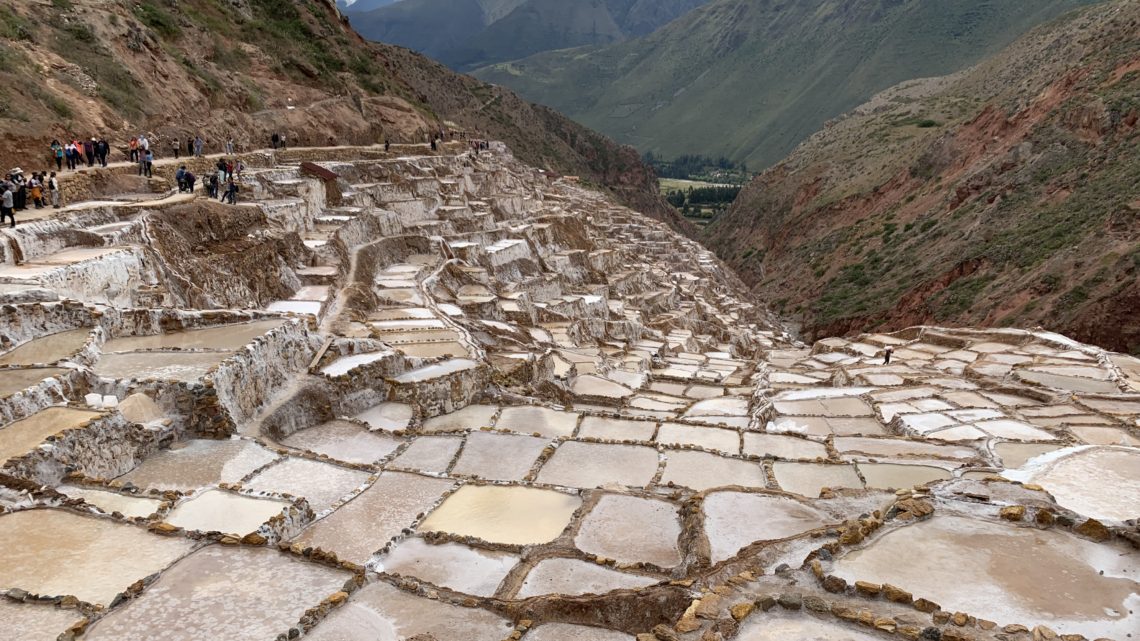
The Cusco Region of Peru is home to the Sacred Valley of the Incas: a picturesque valley filled with archaeological ruins and small towns. Many of these sites are within an easy reach from the city, making them popular side trips for travelers in the area. On my second day in Cusco, instead of going back into the city, I opted to take a group tour to the Inca ruins of Moray and the salt mines of Maras.
The previous night, I booked a spot on the tour through my hostel. That morning, a small van picked me up outside. After making a couple more stops to pick up other travelers, we were dropped off at a large coach bus where we met our tour guide. The bus meandered its way through the narrow streets of Cusco. As we exited the city, the roads began to wind in circles as they climbed the surrounding mountains.
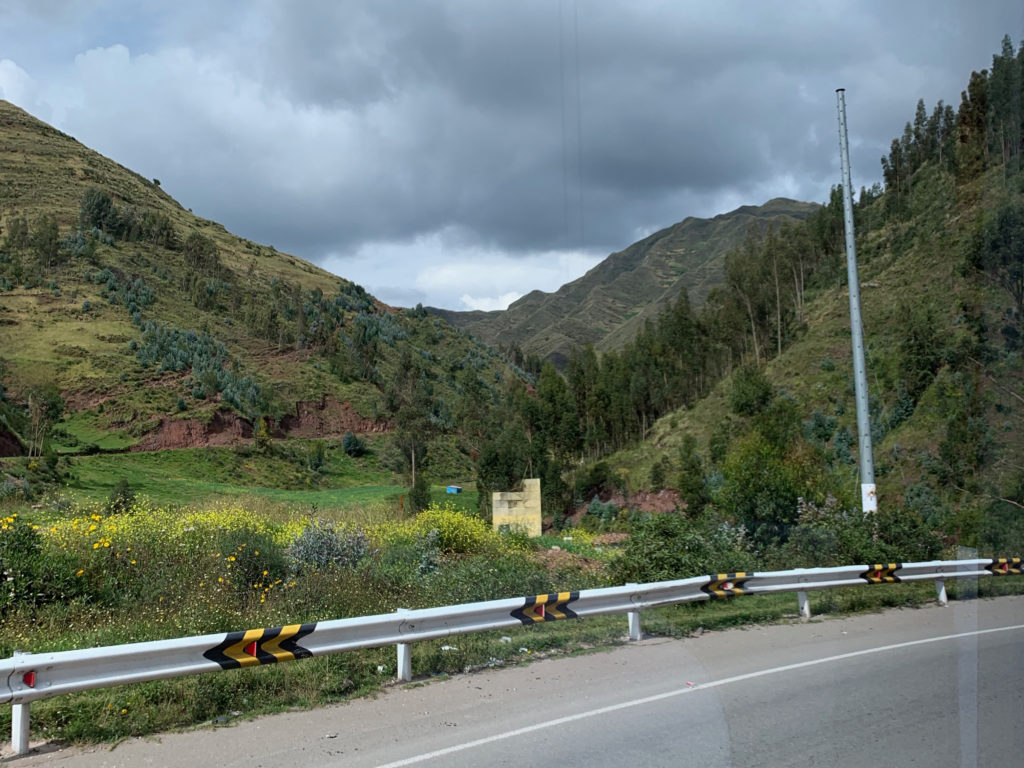
About a half-hour later, the scenery drastically changed from city to country, with beautiful mountains all around me. Our guide introduced himself, giving us a brief overview of the sites we would be visiting. We were headed in the direction of Maras: a town located in the Sacred Valley northwest of Cusco. This town is the closest settlement to the Moray ruins and Maras salt mines: the two attractions included on this tour.
Chinchero
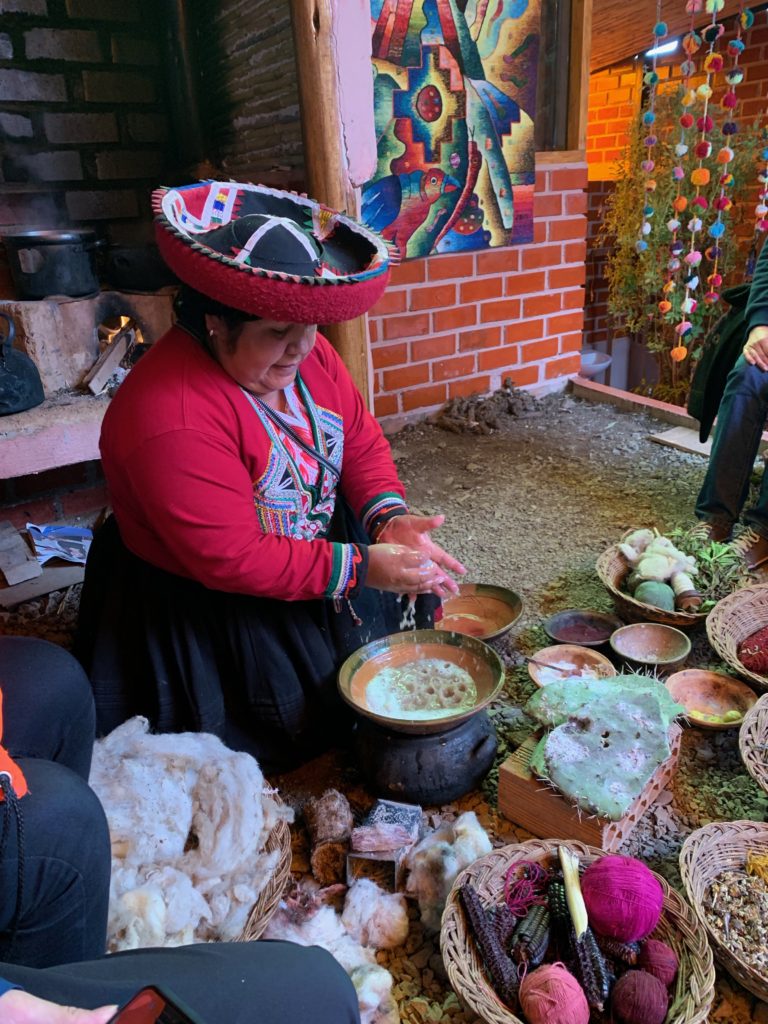
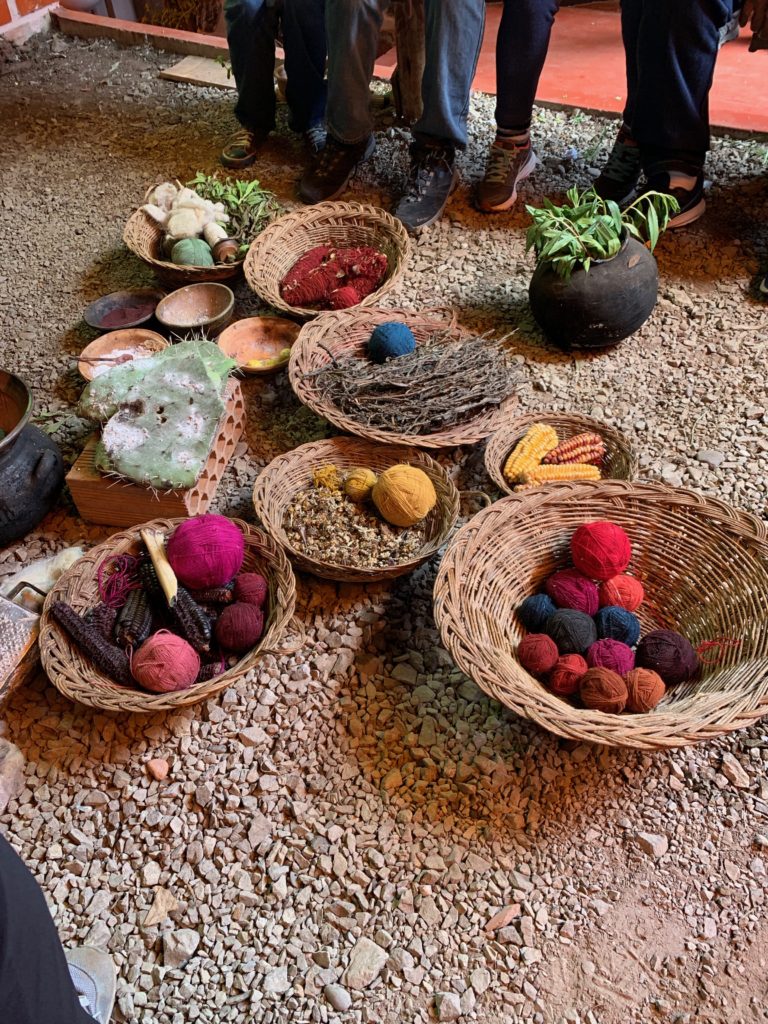
Before reaching Maras, we made a brief stop in Chinchero for a taste of the local Andean culture. Our guide had us disembark from the bus and enter a small wooden hut. The group gathered around as an Andean woman gave us a wool dyeing demonstration. Using natural resources, the woman dyed the wool in a solution to prepare it for being spun into yarn. It is moments like these where I really feel connected to the local culture, and I certainly learned something new from this demonstration. And of course, we had the opportunity to browse some of the finished merchandise!
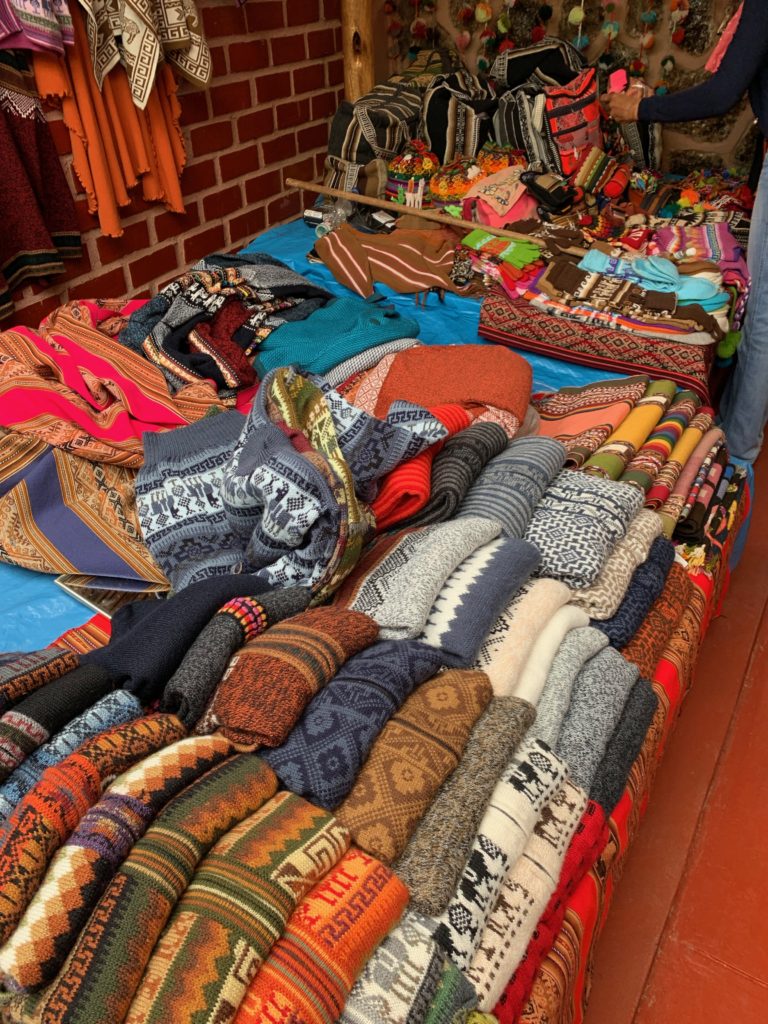
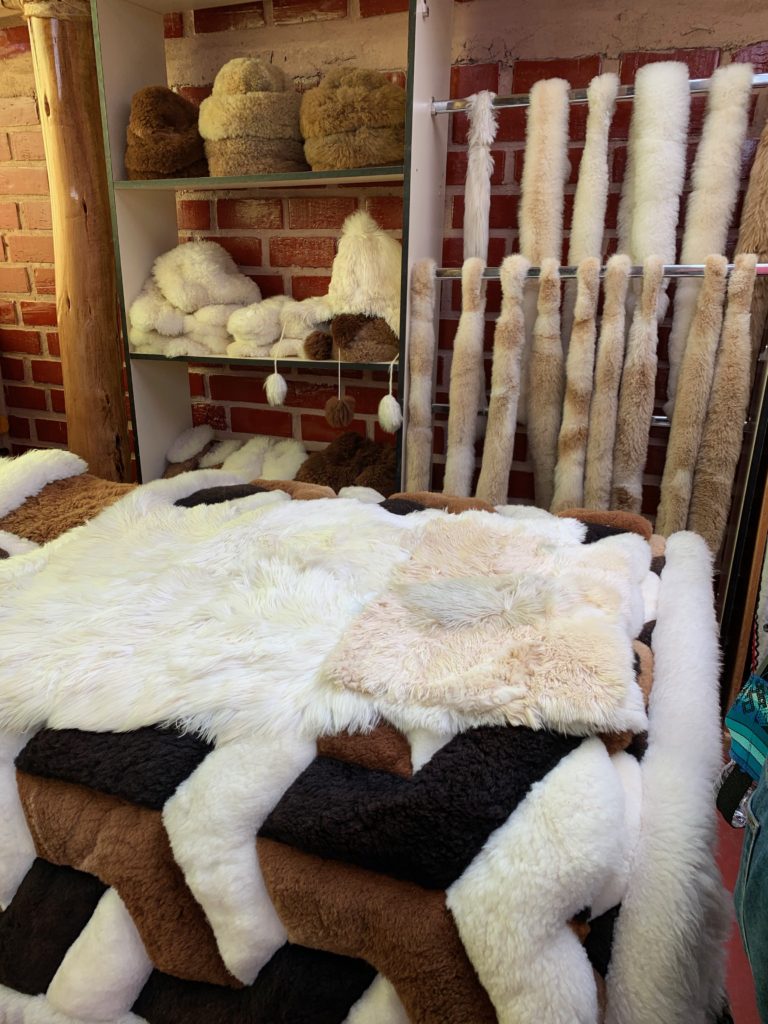
Moray
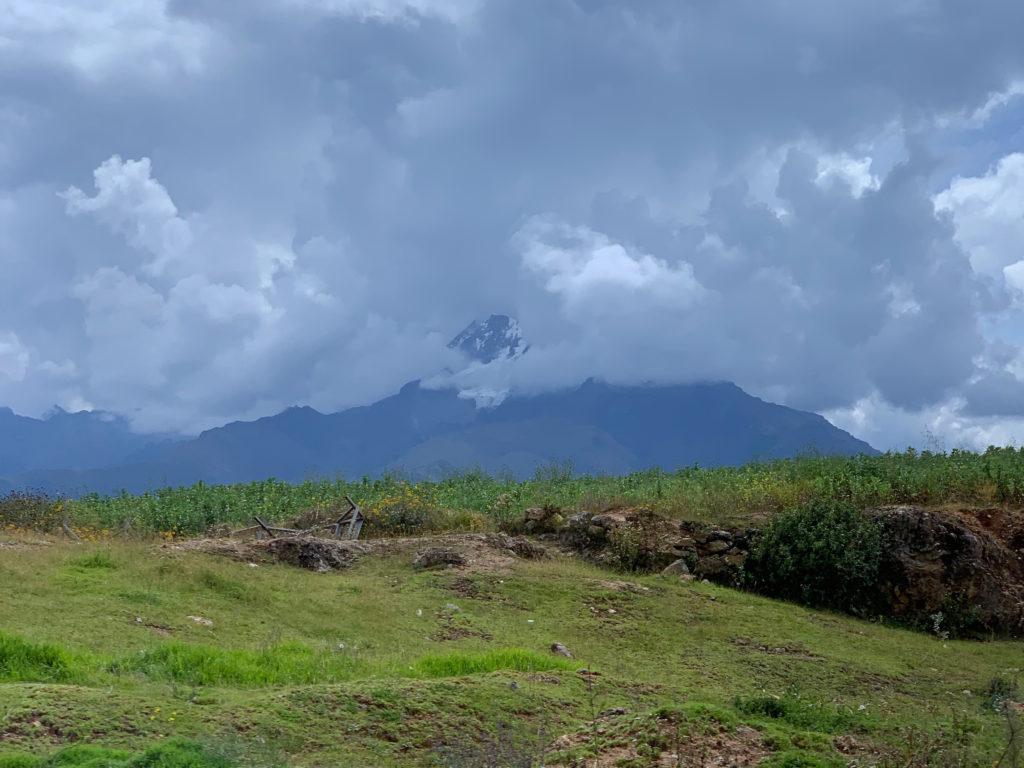
After our brief stop, we got back on the bus and headed towards our first major site of the trip: the Moray ruins. On the way over, I got my first look at the rugged peaks of the Andes. Although most of them were not high enough to be covered by snow, there was one mountain that towered above all the rest. Its peak rose past the clouds, and I got a glimpse at its mystical, snow-capped summit.
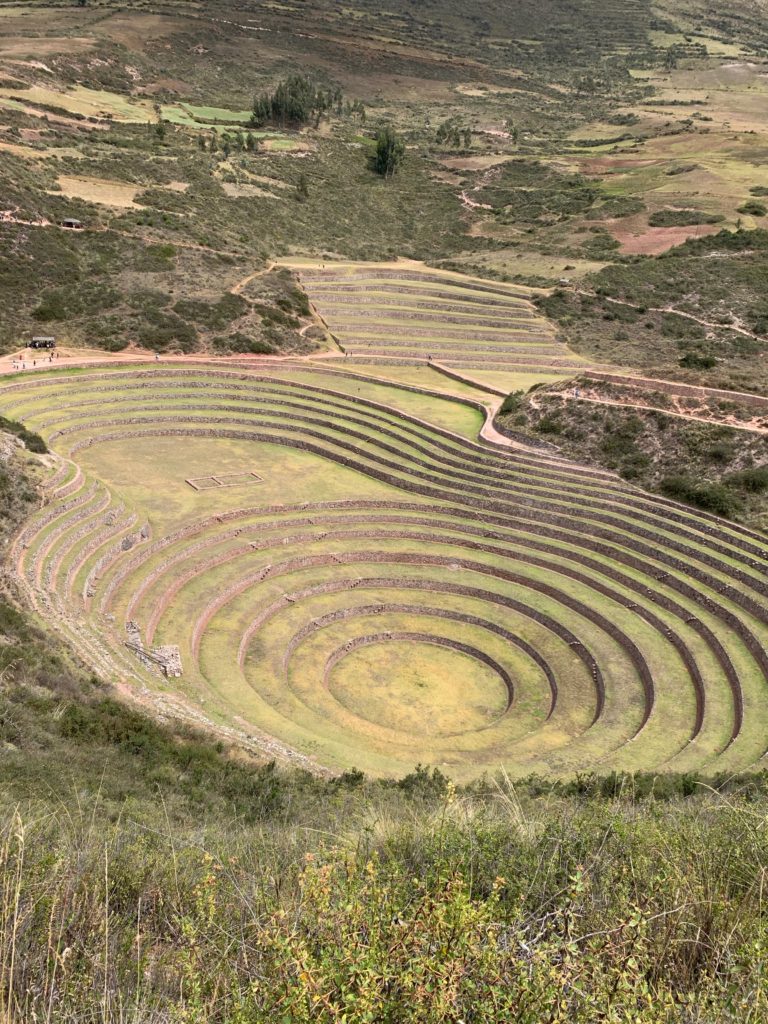
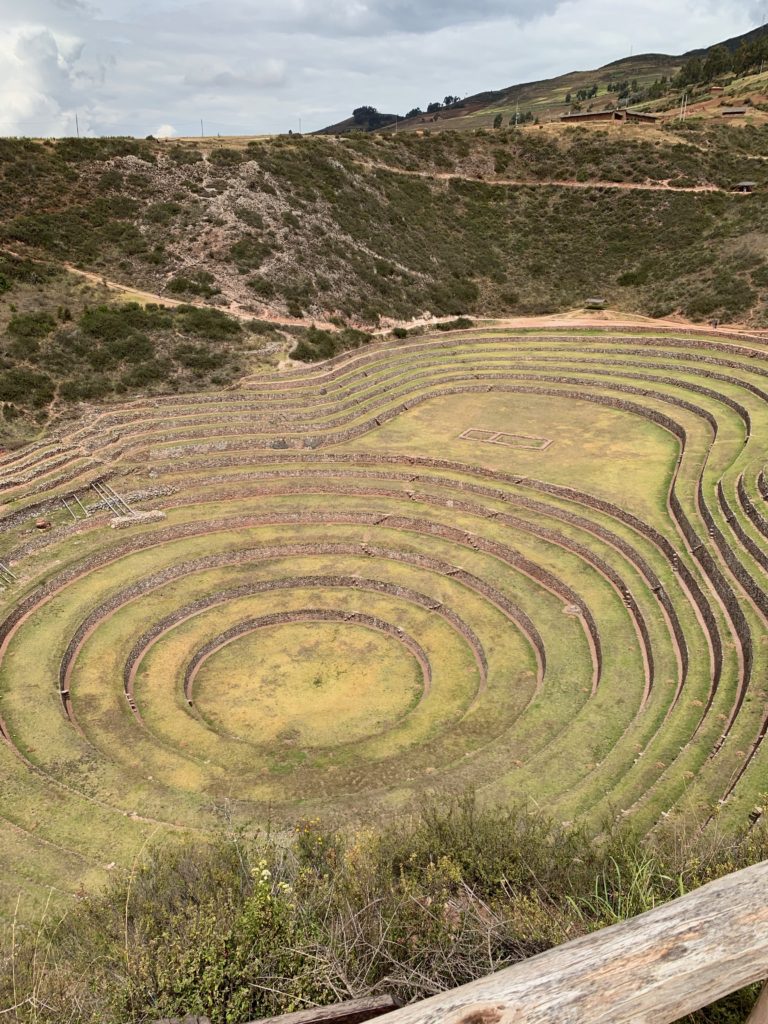
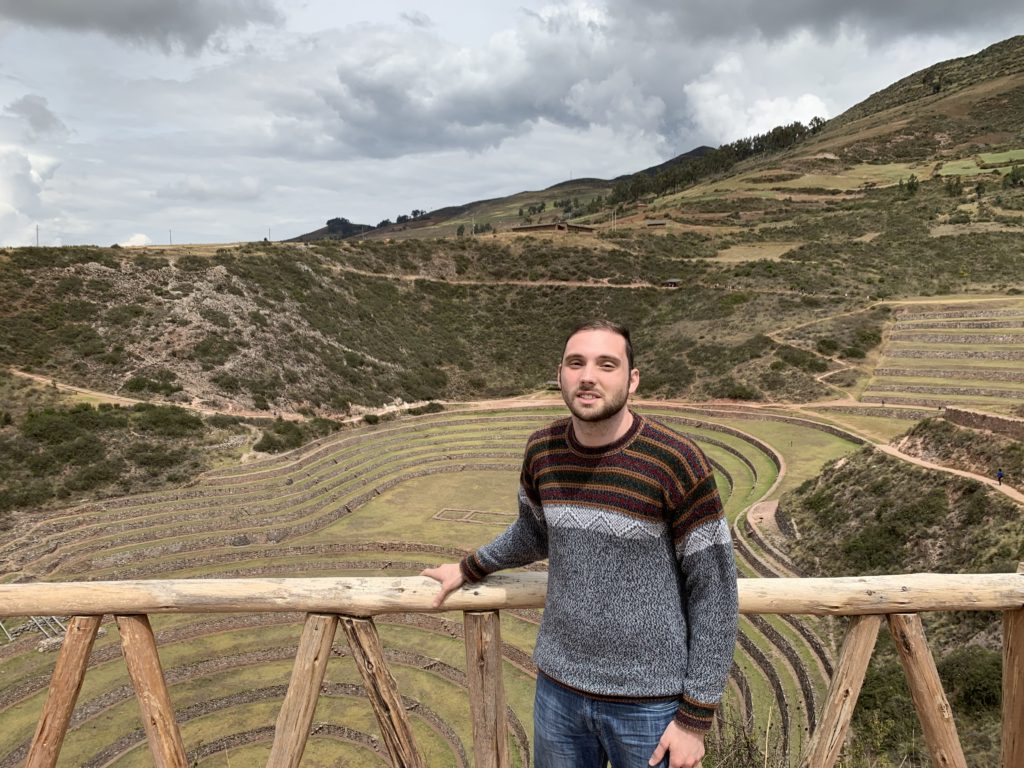
About 45 minutes later, we arrived at the mysterious Inca site. After a brief commentary from our guide, we bought our tickets and proceeded to the ruins. The site consists of three grass-covered stone terraces, all of which are built into the topographic landscape. We started our journey at the largest of these, which strikingly resembles a Greek or Roman amphitheater. The concentric circular terraces are connected by small stepping-stones that protrude from the surrounding walls.
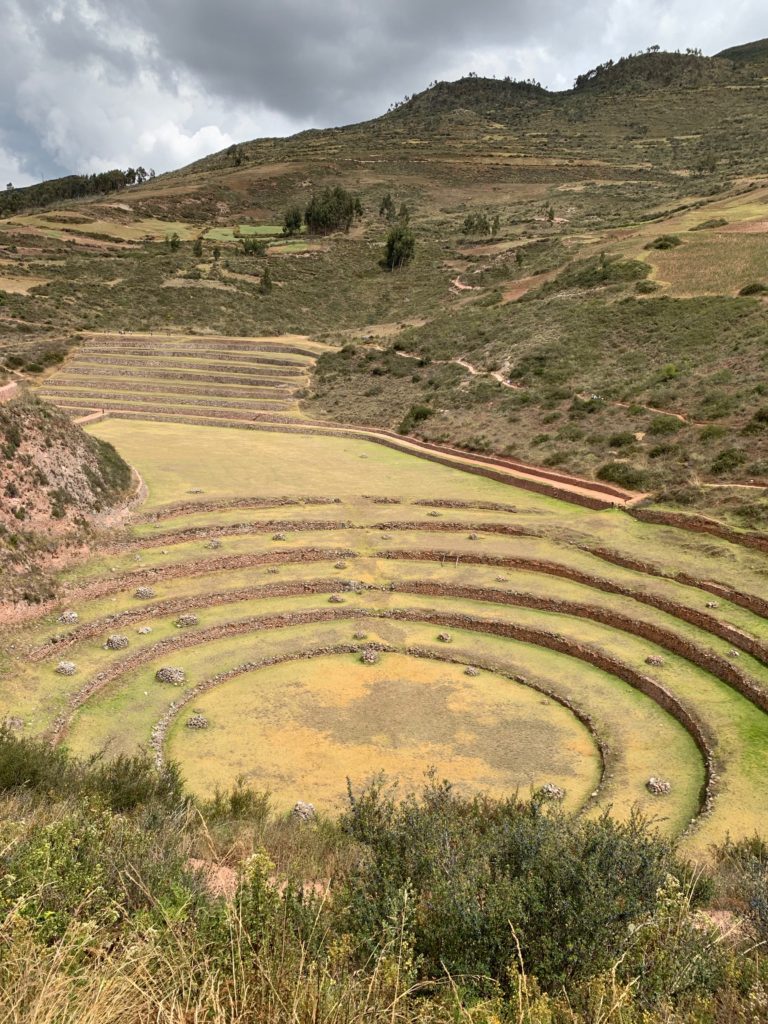
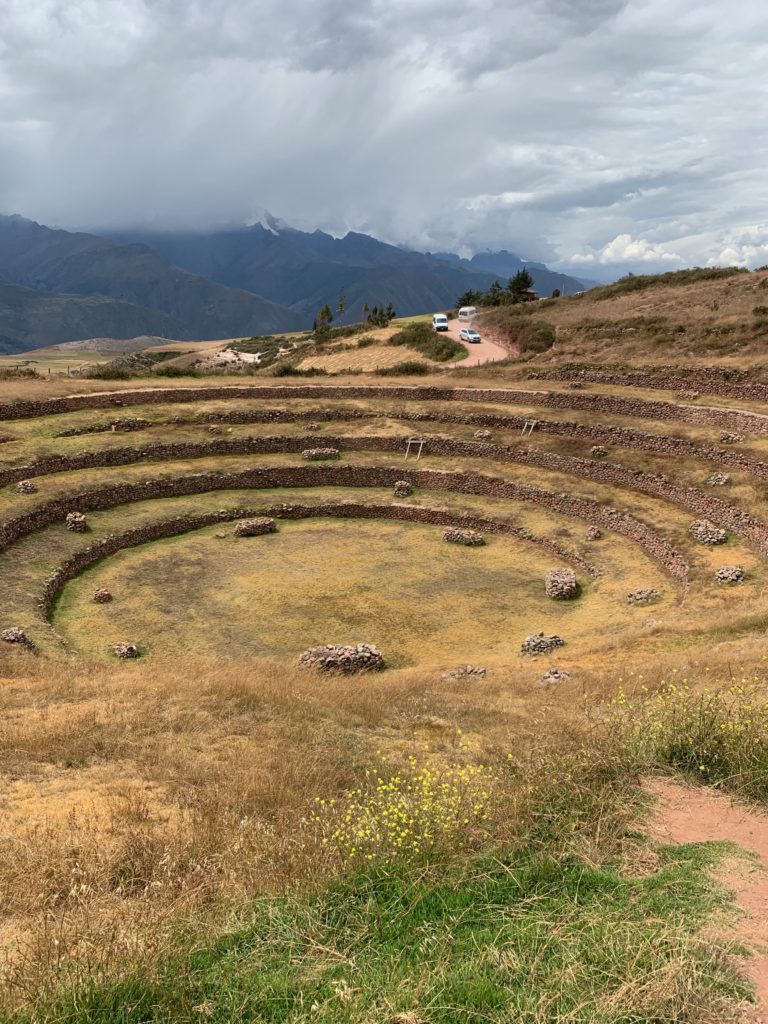
The site also includes a medium-sized, as well as a small terrace. It is believed that the Incas used these spaces for agricultural purposes, as they were precisely designed with the sun and wind in mind. The temperature can change by about as much as 15°C as one ascends from top to bottom. Thus, the Incas had their own microclimates to experiment with as they cultivated their crops. Much like Stonehenge, the true purpose of this site remains unknown. However, it was a joy to visit a style of ruins that I had never seen before. The Incas have a special ability to build spaces that blend well into their natural surroundings.
Maras
From here, it was another 45 minutes to our next stop at the Salineras de Maras. On our way over, we passed through the town of Maras to sample some of the fine salt that is still produced at the nearby ponds. We tried three different variants: a course pink, a medium yellow, and a fine white. The salt had one of the most natural tastes out of any that I have ever tried and was the perfect topping for Peruvian roasted corn.
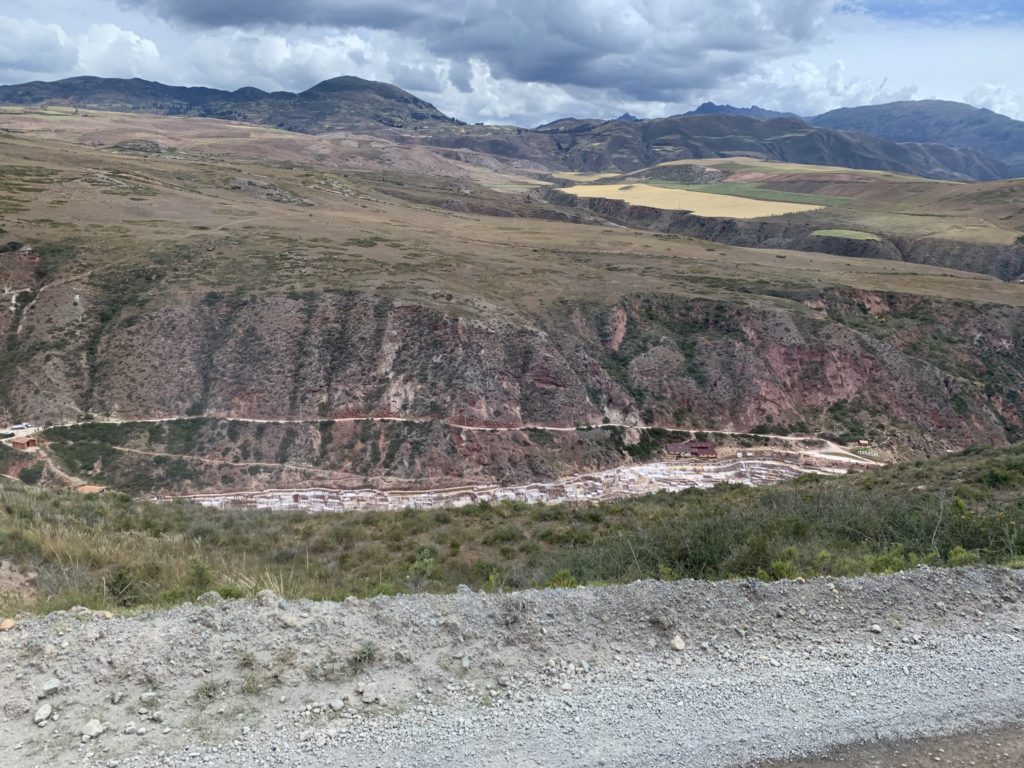
After this brief stop, the bus drove a short way before turning onto a narrow road beside a valley. My adrenaline pumped as we navigated this cliffside road, which had no barrier between us and the salt mines below. However, the views into the valley were absolutely jaw-dropping.
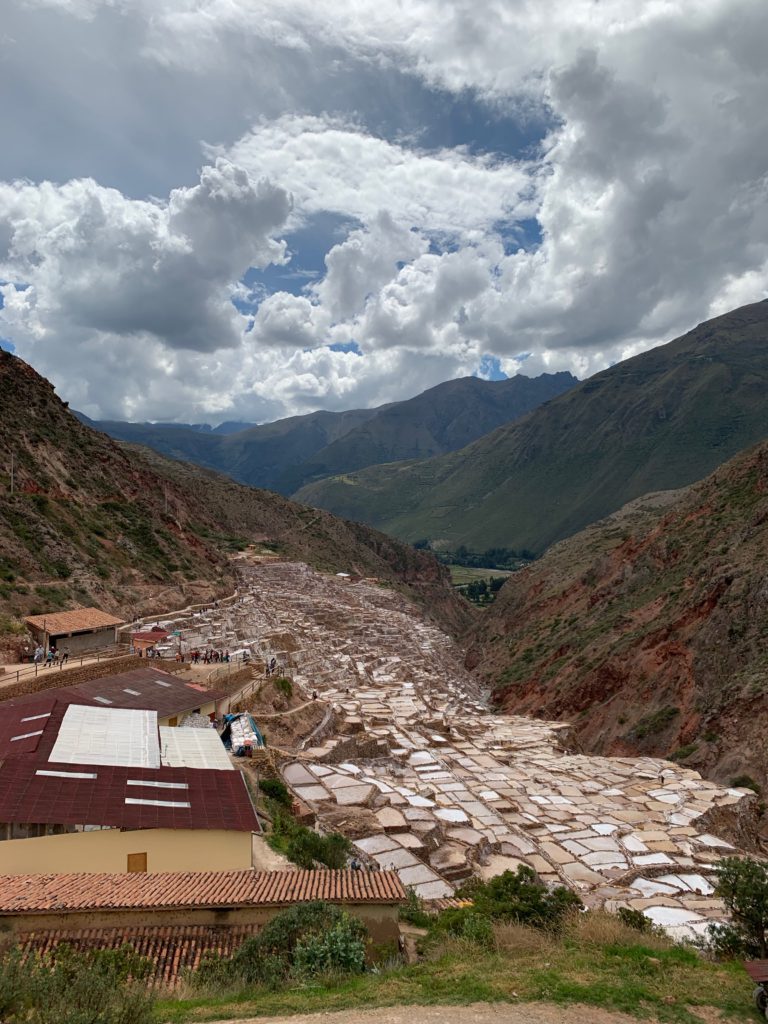
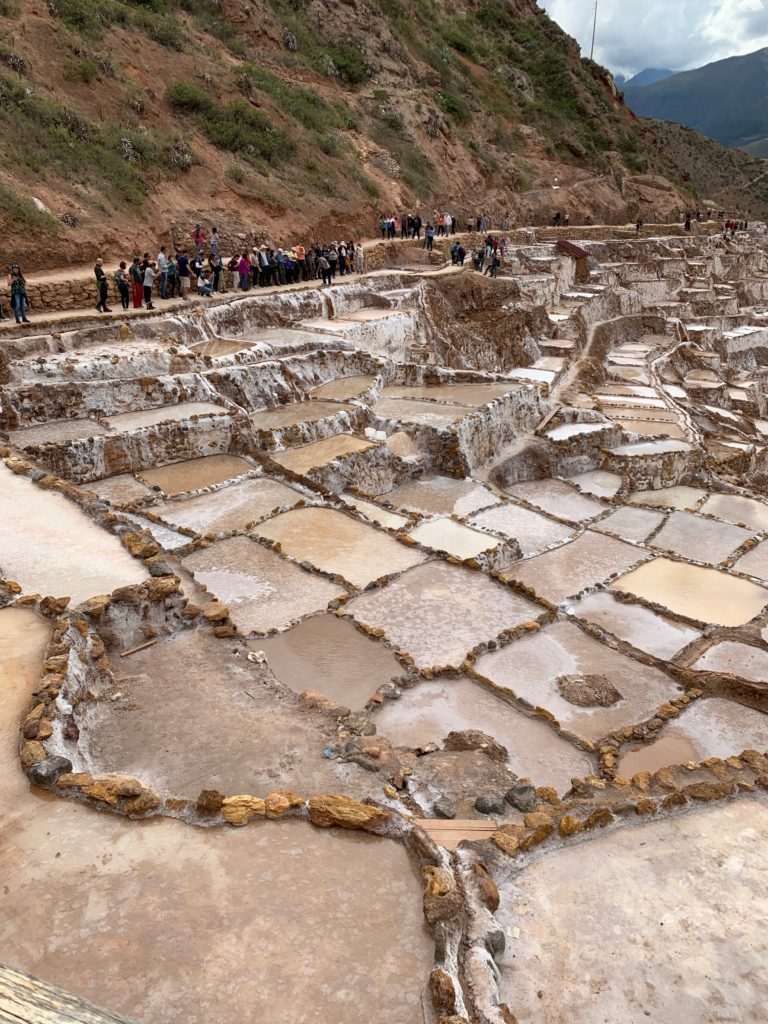
Eventually, we reached the entrance to this stunning Inca site. I had never seen anything like this throughout my other travels. The mines are defined by different shades of brown, tan, and white. From above, the terraced ponds look like a tessellation of rugged squares, triangles, and diamonds scattered throughout the valley.
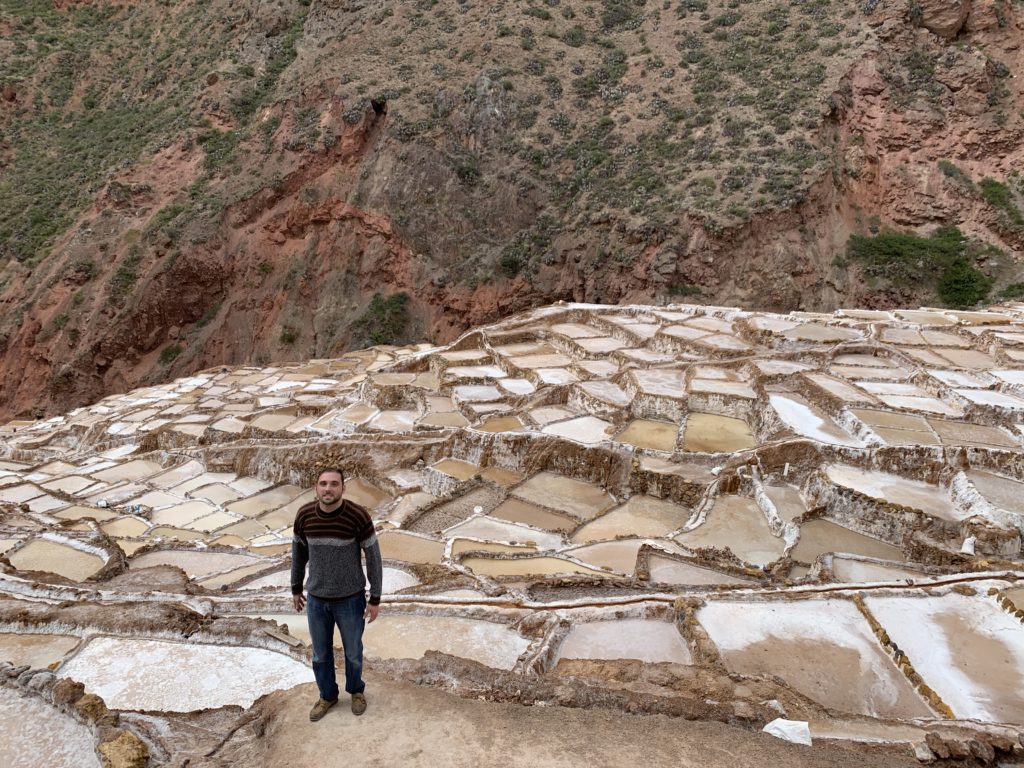
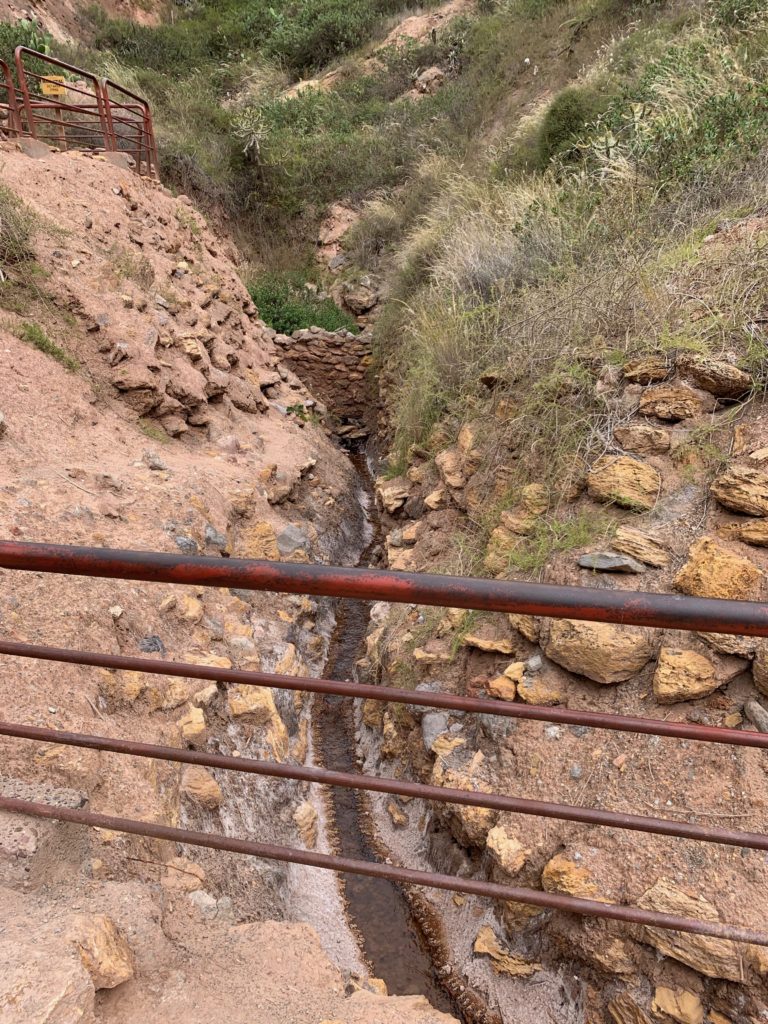
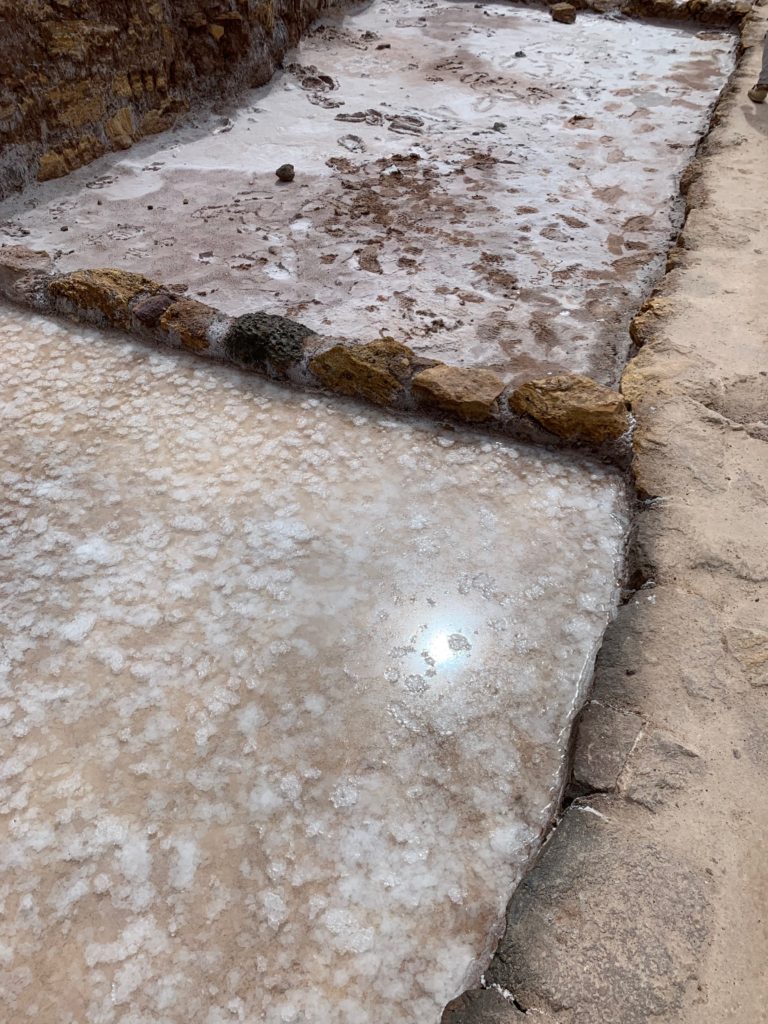
The mines have been in use since the time of the Inca Empire, and are still used by locals today. An underground spring supplies
Returning to Cusco
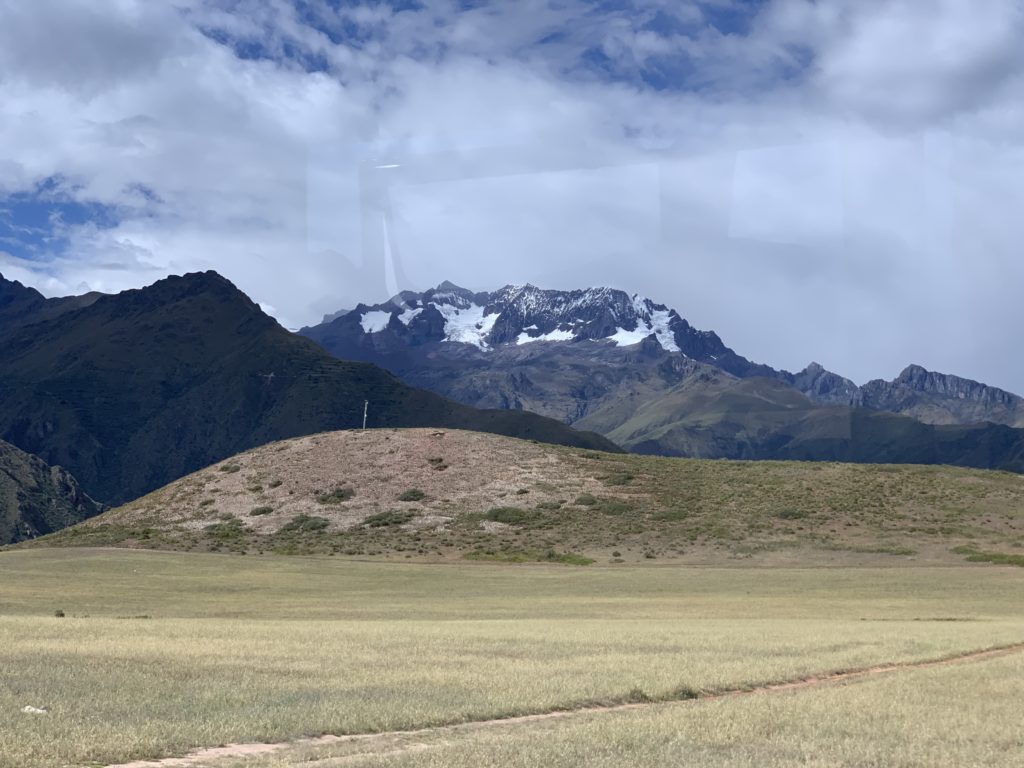
After a thorough look at the salt mines, it was time to head back to Cusco. On the drive over, the clouds cleared the way for a spectacular view of the nearby snow-capped mountain I had seen earlier. After an hour’s drive, we arrived back in Cusco just in time for lunch. My excursion to Moray and Maras was a highlight of my travels in Peru. Both sites are one of a kind and are just as worthy of a stop as the area’s better-known sites. When I travel, I like to experience as wide a variety of building styles as possible, and this excursion did not disappoint.
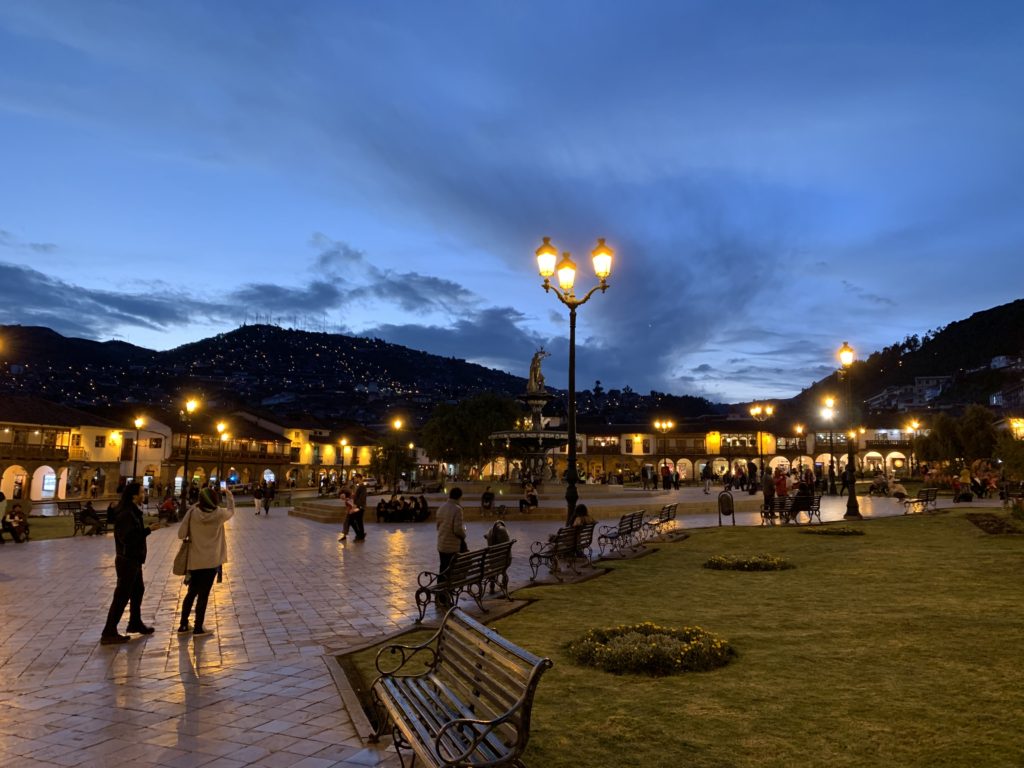
That evening, I headed back to the Plaza de Armas for a group orientation for my upcoming four-day trek to Machu Picchu. I met not only my tour guide but also the other travelers who would be accompanying me on this life-changing journey through the Andes. After two days of exploring Cusco and the Sacred Valley, I was well acclimated to the thin air and ready to tackle the challenge ahead of me.
